Kidney organoids replicate the complex structure and functionality of real kidneys, featuring diverse cell types and functional structures such as vascularization and nephron-like units.
They possess self-tissue regeneration capabilities, making them valuable for experiments. Kidney organoids find applications in drug testing, disease research, and genetic studies.
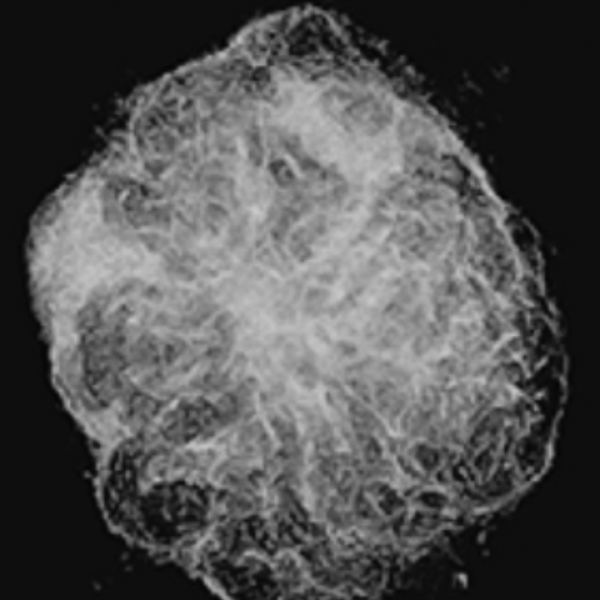

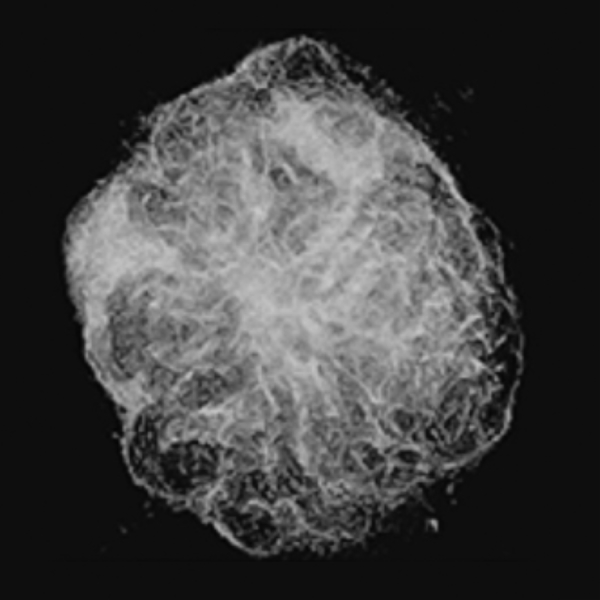
Kidney organoid
Lambda boasts consistent high editing efficiency and stability in CRISPR-Cas9 technology.
We specialize in cell reprogramming and gene editing, enabling you to concentrate on your research as we optimize the process, alleviating the burden on your shoulders.
Cell Type
· iPSC
Assay
· Fabry’s disease modeling
Toxicology is a significant factor contributing to the attrition in the development of therapeutic drugs, and it is a crucial consideration when selecting candidate drugs to progress through the development pipeline.
Cell Type
· iPSC
Assay
· Toxicity test


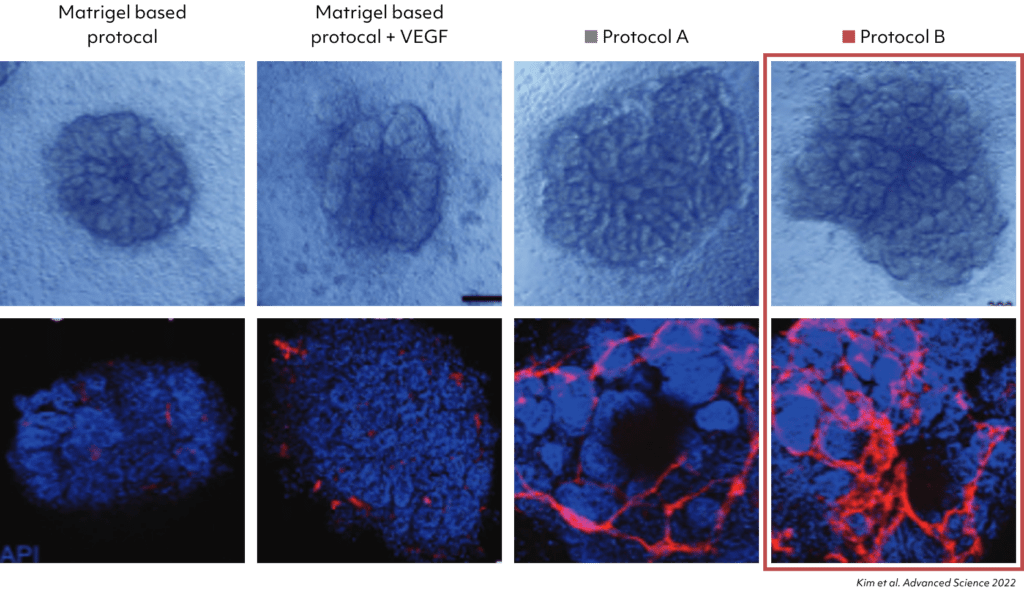
The kidney organoids generated by protocols A and B had tubular structures, and their size was greater than the kidney organoids without kidney dECM.
The vascularization was extensively increased in the kidney organoids generated by protocol A, and accelerated in those generated by protocol B.


Confirmation of increased PECAM1expression in Kidney Organoids grown with Protocol B.
Increased vascular network observed in the new differentiation protocol.



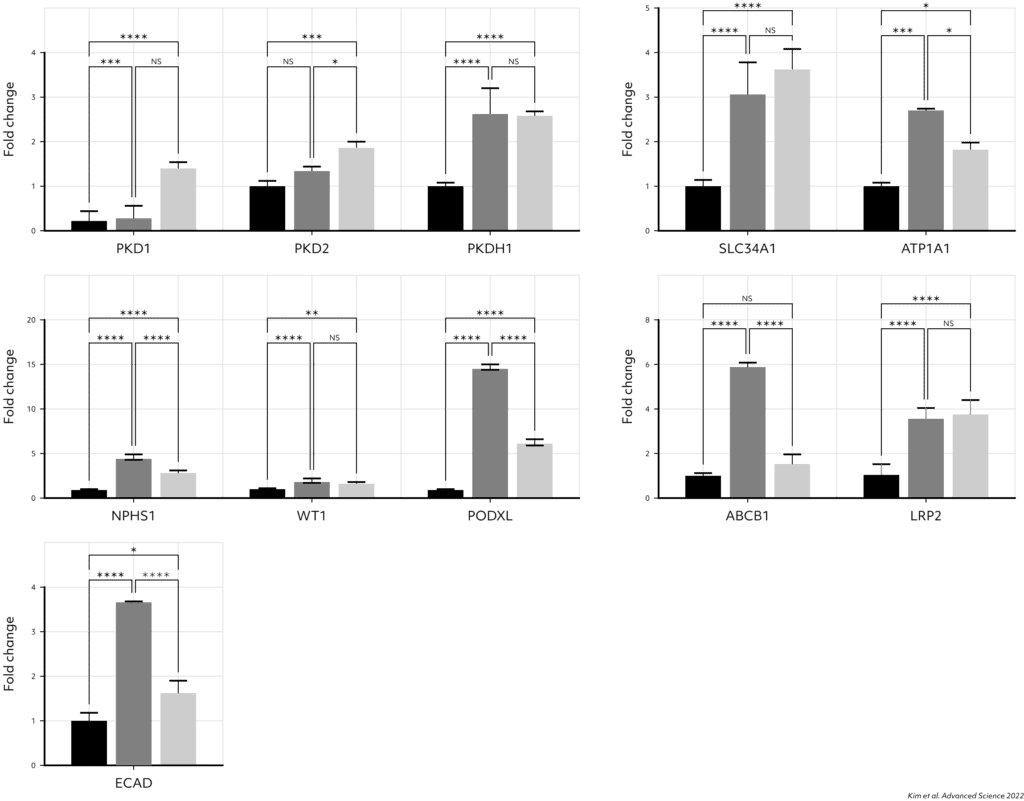
Enhanced polarization of the proximal tubules, with apical enrichment of the brush border marker lotus tetragonolobus lectin (LTL) and primary cilia, was observed in kidney organoids cultured by protocol A and B.

The kidney organoids were subjected to treatment with 100 μg/mL of FITC dextran (70 kDa) at day 14. After 48 hours of dextran treatment, the tubular reabsorption of 70-kDa dextran within LTL proximal tubule epithelial cells was notably higher in kidney organoids generated by protocol A or B

Identifying 18 cell types in kidney organoids through scRNAseq, the research demonstrated improved nephron cell differentiation in the presence of kidney dECM, notably with protocols A and B.
These protocols showed reductions in off-target cells, proliferating cells, and precursor cells. Pseudo-time ordering further revealed enhanced cell maturity in organoids cultured with protocols A and B.

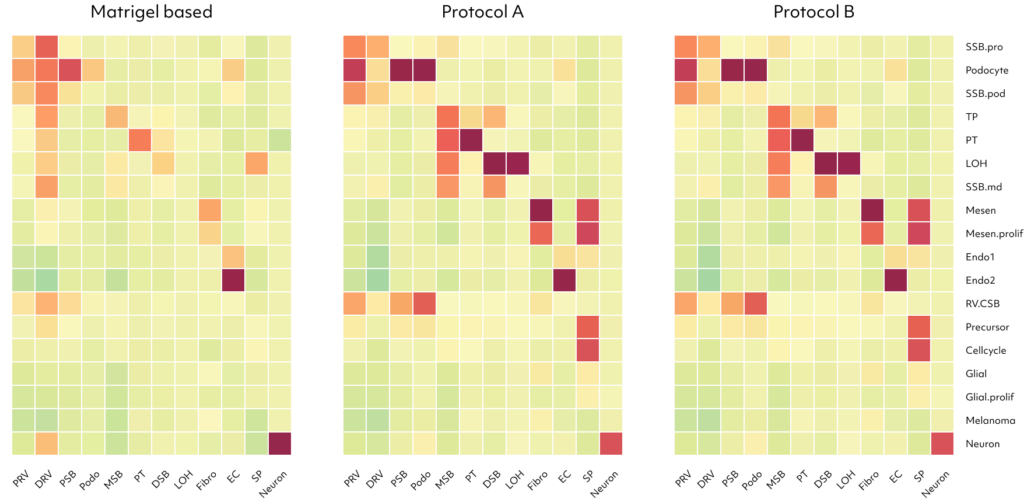
Examining upregulated genes in podocytes generated by protocols A and B, the functional enrichment analysis for Gene Ontology (GO) biological processes revealed their predominant involvement in kidney and nephron development.
These findings suggest that kidney dECM influences genes associated with kidney development, enhancing maturation into nephron cells.
Notably, podocytes induced by protocols A and B exhibited a high resemblance to human and fetal podocytes and proximal tubule (PSB), while those induced by the Matrigel-based protocol showed lower similarity.
Furthermore, various cell types induced by protocols A and B demonstrated increased similarity to human and fetal kidney cell types.